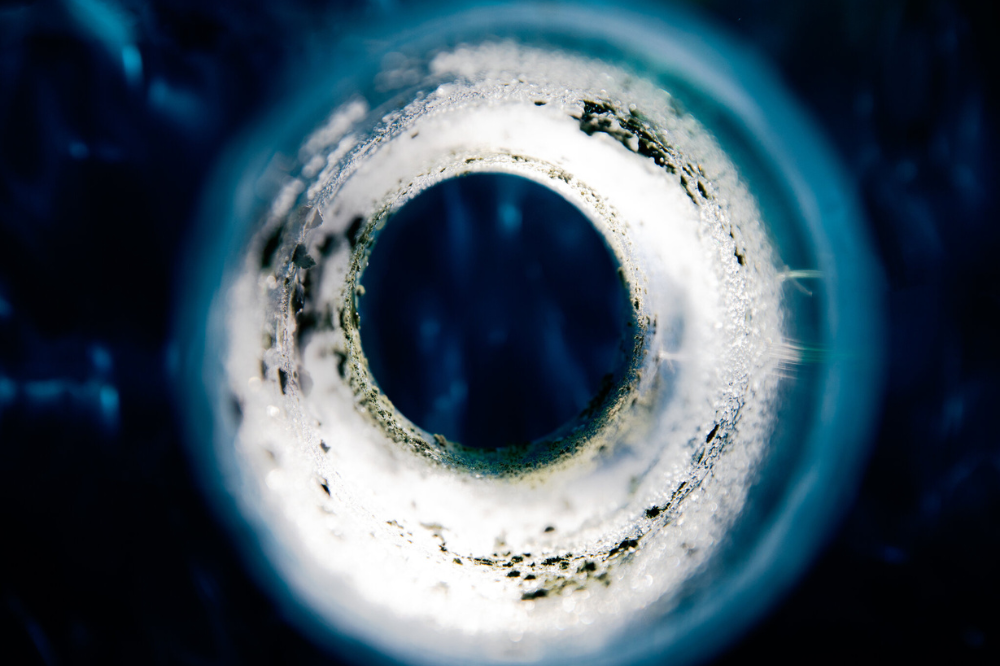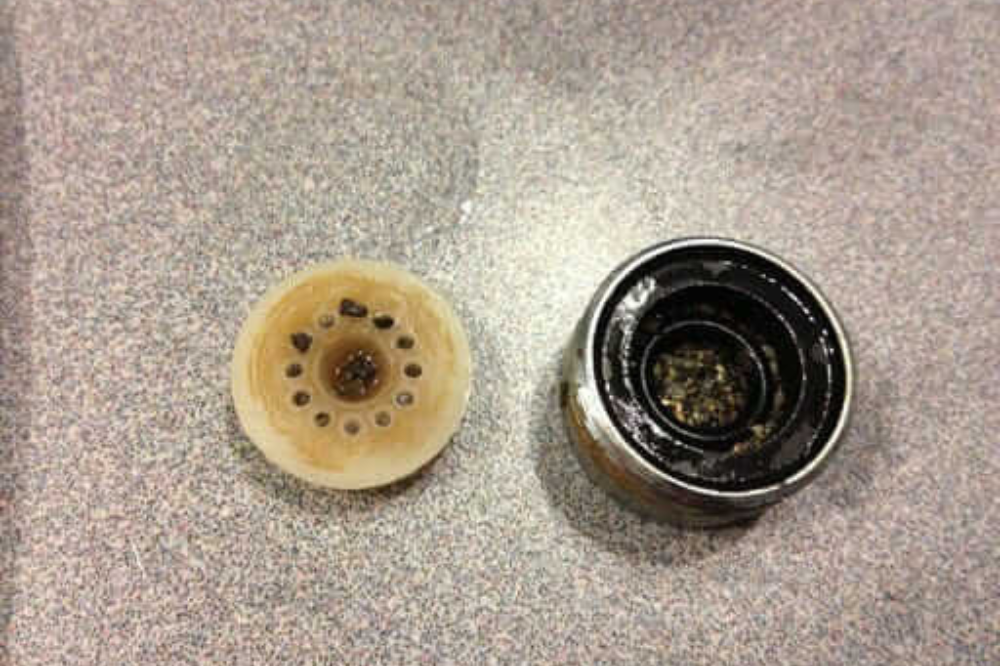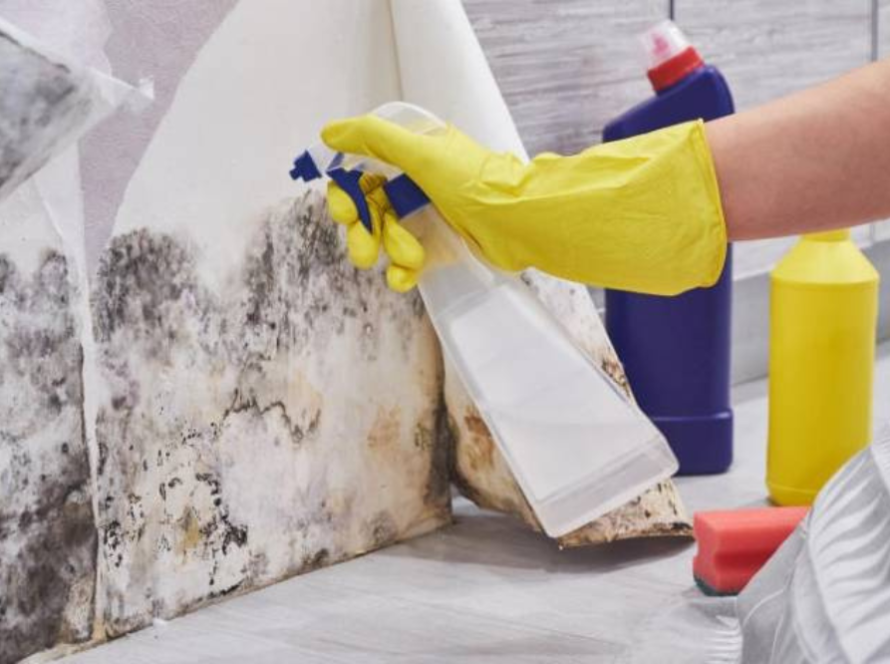Water bottles have become a ubiquitous accessory for health and fitness enthusiasts, offering a convenient way to stay hydrated throughout the day. However, what many consumers don’t realize is that their reusable water bottles can harbor harmful black mold that poses a serious risk to their health.
Black mold is a type of fungus that thrives in damp and humid environments, making water bottles a perfect breeding ground for its growth. When left unchecked, black mold can lead to a variety of health issues, including respiratory problems, allergies, and other adverse effects.
Key Takeaways:
- Reusable water bottles can harbor harmful black mold that poses a serious risk to their health.
- Black mold thrives in damp and humid environments, making water bottles a perfect breeding ground for its growth.
- When left unchecked, black mold can lead to a variety of health issues, including respiratory problems, allergies, and other adverse effects.
- Proper cleaning and maintenance of water bottles are essential to prevent black mold growth and ensure safe hydration.
- Fix Mold Miami is Florida’s leading mold inspection service provider that can help assess and remediate black mold issues in water bottles.
Understanding Black Mold Growth
Black mold is a type of fungus that can grow nearly anywhere with moisture and organic matter. Water bottles are no exception, particularly when not cleaned or dried properly. When left in warm and moist conditions, this fungus can flourish rapidly within the bottle and potentially cause health hazards.
The growth of black mold in water bottles can be attributed to several factors, including:
| Factors | Description |
|---|---|
| Humidity | The presence of humidity or moisture creates a breeding ground for mold growth. |
| Low Ventilation | Airflow plays a substantial role in preventing mold growth. Without proper ventilation, it can persist and reproduce. |
| Unwashed Surfaces | When bottles are not washed thoroughly or frequently enough, it creates an environment where mold spores can thrive. |
| Stagnant Water | Stagnant water in a water bottle can lead to the growth of mold and other bacteria, particularly when the bottle is not properly dried after use. |
Understanding these factors can help you take proactive measures to prevent black mold growth in water bottles. It’s essential to clean and dry your water bottle thoroughly after each use and avoid storing it in dark and damp locations.
Health Risks of Black Mold in Water Bottles
Black mold is a serious health hazard when consumed, especially for people with weakened immune systems. When mold spores are inhaled, they can cause respiratory issues, allergic reactions, and other adverse effects.
Some of the health risks of black mold in water bottles include:
- Headaches
- Respiratory distress
- Allergic reactions
- Irritation of the eyes, nose, and throat
- Immune system suppression
- Neurological problems
It is crucial to recognize the potential dangers of consuming water contaminated with black mold and take necessary measures to prevent it.
Although rare, extreme exposure to black mold can lead to serious health problems such as pulmonary fibrosis and even death. Therefore, it is essential to maintain proper hygiene practices for water bottles and seek professional help if any signs of black mold contamination are observed.
Signs of Black Mold in Water Bottles
Black mold can grow anywhere under the right conditions, including in water bottles. If you suspect your water bottle may be contaminated with black mold, look out for these common signs and symptoms:
- Visible mold: The most obvious sign of black mold contamination is the presence of black or dark green spots on the inside or outside of your water bottle.
- Unpleasant odor: Black mold has a distinct musty or earthy smell that can be unpleasant to the senses.
- Strange taste: Water contaminated with black mold can have an off taste that is often described as bitter or sour.
- Residue on the bottle: If you notice an unusual film or residue on the inside of your water bottle, it may indicate black mold contamination.
- Health symptoms: If you experience respiratory or allergy symptoms after drinking from a water bottle, it may indicate black mold contamination.
If you suspect black mold contamination, it is essential to take immediate action to avoid potential health risks. Check out section 5 for a step-by-step guide on how to effectively clean your water bottle.
Proper Cleaning Techniques for Water Bottles
Cleaning water bottles is essential for preventing black mold growth and ensuring safe drinking water. Follow these step-by-step instructions to clean your water bottle effectively:
- Prep: Before cleaning, check the manufacturer’s instructions for any specific guidelines. Empty the bottle and rinse it thoroughly with hot water.
- Cleaning solution: Mix a cleaning solution of one-part water and one-part vinegar, or use a mild dish soap. For tough stains, add baking soda and shake well.
- Scrub: Use a long-handled brush to scrub the inside of the bottle, focusing on areas with stains or residue. Pay special attention to the bottom and mouth of the bottle.
- Rinse: Rinse the entire bottle with hot water until the cleaning solution and all debris have been removed.
- Dry: Let the water bottle air dry completely before using it again. Avoid using a towel as it may leave lint and bacteria behind.
Remember to clean your water bottle after each use and avoid leaving water or other liquids in it for prolonged periods.
“Cleaning water bottles regularly is critical to maintaining good health and proper hygiene. Using a simple solution of vinegar and water or mild soap will keep your bottle free of black mold and other harmful microorganisms. “
Removing Black Mold from Water Bottles
Black mold in water bottles can pose serious health risks if not properly addressed. Fortunately, there are several effective methods and cleaning agents that can be used to remove black mold and ensure safe hydration.
One popular solution is to create a mixture of equal parts white vinegar and water and allow the mixture to sit in the bottle for several hours before rinsing thoroughly. Another effective option is to use a mixture of baking soda and water, which should be shaken vigorously inside the bottle before rinsing.
For more stubborn cases of black mold, a bleach solution may be necessary. However, it is important to use caution when handling bleach and to follow proper safety guidelines.
Regardless of the solution chosen, it is important to ensure that all traces of black mold have been removed from the bottle before using it again. This may require multiple rounds of cleaning or the use of specialized brushes or tools to reach all surfaces inside the bottle.
By taking the necessary steps to remove black mold from water bottles, individuals can protect themselves from the health risks associated with contaminated water and ensure safe, hygienic hydration.
Preventing Black Mold in Water Bottles
Effective mold prevention in water bottles requires consistent and thorough cleaning practices. Here are some practical tips to help avoid black mold growth:
- Wash your water bottle regularly: Use hot, soapy water to clean your water bottle daily, paying close attention to the areas where mold is likely to grow such as the mouthpiece, cap, and interior surfaces. Rinse it well after washing to remove all traces of soap.
- Dry your water bottle properly: After washing, be sure to dry your water bottle completely to prevent moisture from accumulating, which can promote mold growth. Use a clean towel or air-dry it upside down to allow excess water to drain out.
- Avoid sharing your water bottle: Sharing a water bottle with others can introduce new bacteria and germs, which can then contribute to the growth of mold. It’s best to use your own personal water bottle and avoid sharing it with others.
- Store your water bottle in a cool, dry place: Mold thrives in warm, damp environments, so it’s important to keep your water bottle in a cool, dry area when not in use. Avoid storing it in hot, sunny locations such as the car or direct sunlight.
- Consider using a UV-C sanitizer: UV-C sanitizers use ultraviolet light to kill bacteria and mold spores, making them a great option for disinfecting water bottles. Be sure to follow the manufacturer’s instructions carefully when using a UV-C sanitizer.
By following these simple tips and making sure your water bottle stays clean and dry, you can help prevent black mold growth and ensure safe hydration for yourself and your family.
Did you know?
Studies have found that reusable water bottles can harbor more bacteria than a dog’s toy! Proper cleaning and maintenance can help keep your water bottle safe and free of harmful germs and mold.

Maintaining Water Bottle Hygiene
Proper maintenance and hygiene practices for water bottles are crucial to minimizing the risk of black mold contamination and ensuring safe drinking water. Here are some essential tips:
- Wash your water bottles daily: Thoroughly wash your water bottle with soap and warm water every day, especially after using it for beverages other than water.
- Avoid using abrasive materials: Use a bottle brush or soft sponge to clean the inside of the water bottle to avoid damaging the surface or leaving residue behind.
- Allow the water bottle to dry completely: After washing, leave the bottle uncapped and upside down to air-dry completely before capping it. This helps prevent the growth of mold or bacteria in moist areas.
- Replace water bottles regularly: Consider replacing your water bottles every six months, or as soon as you notice discoloration, scratches, or signs of mold growth.
In addition to these hygiene practices, storing your water bottle properly is also important. Store your bottle in a clean, dry place, away from direct sunlight or heat sources, to prevent the growth of mold or bacteria.
For more information on black mold prevention, removal, or if you think you have a mold issue, consider contacting a professional mold assessment and remediation service such as Fix Mold Miami. Their team of experts can assess and remediate your mold issues, ensuring a mold-free environment.
Understanding Mold Assessments and Remediation
Mold assessments and remediation are essential processes in preventing and mitigating mold-related issues. Mold growth can occur in any environment with high humidity levels, where moisture builds up and provides a breeding ground for mold spores. Black mold is particularly concerning as it can cause adverse health effects on those exposed to it, such as respiratory issues, allergies, and other health problems.
Therefore, it is crucial to implement preventive measures and check for mold growth regularly. Mold assessments are the primary way to determine the extent of the mold problem in a space. It involves inspecting and assessing the visible mold and other areas that may be affected by mold growth. Professionals in the field, such as Fix Mold Miami, use advanced techniques and tools to identify all the sources of mold growth and provide accurate assessment reports.
Once a mold assessment has been carried out and the extent of the mold growth is determined, remediation becomes the next step. Mold remediation involves utilizing different techniques and cleaning agents to remove mold and prevent its regrowth. The process should only be done by trained and certified professionals, as improper methods can lead to cross-contamination and further mold growth.
To prevent black mold growth, it is important to monitor humidity levels, fix leaks as soon as they appear, and properly ventilate all enclosed spaces. Regular cleaning and proper maintenance of water bottles, HVAC systems, and other household items also help to prevent mold growth. Implementing these preventive measures along with professional mold assessments and remediation services can ensure a mold-free environment.
Mold Assessment vs. Mold Testing
It is worth noting that mold assessment and mold testing are two different things. Mold testing involves collecting air or surface samples to determine the type of mold present in a space. However, it is not necessary to determine the specific type of mold to carry out remediation. What is needed is to identify the extent of the mold growth and remove it safely.
“Mold removal is not a one-size-fits-all process. Professional mold remediation services, such as those provided by Fix Mold Miami, have the expertise and equipment to remove mold safely and effectively.”
Fix Mold Miami: Florida’s Leading Mold Inspection Service
If you’re concerned about black mold in your home or office, Fix Mold Miami can help you assess and remediate any issues. As Florida’s highest-rated mold inspection and prevention service provider, Fix Mold Miami has the expertise to ensure mold-free environments and protect your health and wellbeing.

Our highly trained and certified technicians use state-of-the-art equipment and techniques to identify and remove mold from your property, restoring the air quality to a safe and healthy level. Whether you need emergency mold removal services or ongoing prevention and maintenance, Fix Mold Miami has you covered.
Contact us today at 305-465-6653 to schedule a mold inspection and take the first step towards a healthier living and work environment.
Conclusion
Black mold in water bottles can pose a significant risk to individual health, causing respiratory issues, allergies, and other adverse effects. Proper cleaning and maintenance of water bottles are crucial to prevent the growth and reoccurrence of black mold.
By following the cleaning tips and preventive measures discussed in this article, individuals can maintain water bottle hygiene to minimize the risk of contamination. If black mold is present, it is essential to remove it using appropriate cleaning agents and methods to ensure water bottles are safe to use.
Remember, prevention is always better than remediation, which is why regular mold assessments and maintenance practices are necessary. At Fix Mold Miami, we offer high-quality mold inspection and remediation services to ensure a mold-free environment. Contact us today at 305-465-6653 to schedule a mold inspection and ensure your safety and well-being.
FAQ
Can black mold grow in water bottles?
Yes, black mold can grow in water bottles, especially if they are not cleaned and dried properly. Mold thrives in moist and dark environments, making water bottles the perfect breeding ground if hygiene practices are neglected.
What are the health risks of consuming water contaminated with black mold?
Consuming water contaminated with black mold can pose several health risks, including respiratory issues, allergies, and other adverse effects. Black mold produces mycotoxins that can trigger allergic reactions in individuals with sensitivities and weaken the immune system over time.
How can I tell if there is black mold in my water bottle?
Signs of black mold in water bottles include visible black or dark green patches on the inner walls, a musty or earthy odor, and a slimy or discolored residue inside the bottle. If you notice any of these signs, it’s important to take immediate action to clean and sanitize your water bottle.
How do I clean a water bottle with black mold?
To effectively clean a water bottle with black mold, start by using a mixture of hot water and dish soap to scrub the inner walls and remove visible mold. Then, rinse thoroughly with clean water and allow the bottle to air dry in a well-ventilated area. For added safety, consider using a bottle brush or a diluted bleach solution to sanitize the bottle.
How can I prevent black mold from growing in my water bottle?
To prevent black mold from growing in your water bottle, make sure to clean it regularly using hot soapy water and thoroughly dry it before storing. Avoid leaving water in the bottle for extended periods and store it in a cool, dry place. Additionally, consider using a glass or stainless-steel bottle, as mold is less likely to grow on these materials.
Are there any professional services available for mold removal in water bottles?
While there are no specific professional services solely for mold removal in water bottles, mold remediation companies can help assess and mitigate mold issues in residential and commercial properties. If you suspect extensive mold growth or recurring mold problems, consulting a professional may be recommended.



